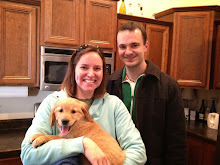Christmas Day post #2, getting some catch-up on. Before breaking (moving) for the summer, I worked on the driver's door, the hood, and re-worked the driver's fender. I also epoxied all the parts that bolt on, such as the valances (both front and rear), the headlight buckets, the trunk lid, and the quarter panel extensions.
I. Driver's side fender.
These were the scope of my efforts in the summer of 2010. I was new to body work when doing this. Since I had improved considerably over time with additional practice and experience, I was no longer happy with the work I had originally done on these fenders, not to mention I had better tools now, such as my durablocks.
After already spending countless hours on the fender, I ended up taking most of the filler off I had applied previously so I could bump the low spots out. Since I'm much better at bumping now it was well worth the effort because I ended up with a very straight fender with considerably less filler on it. Here the bullseye pick was a lifesaver to assist with bumping out quarter-sized low spots on the top of the fender.
When I took the fenders out of storage, I blocked them with my durablocks to see how far off from a thorough job I really was. It was at this time I also removed much of the filler, bumped, and reapplied. Here my Platinum was a major advantage over the heavy-building, poor-sanding cheap 3M lightweight filler I was using. I shot another three coats of 2k primer on the fender, then blocked and bumped. The very last step was to fill in every tiny scratch and imperfection with EZ Sand putty. Before moving I put three last coats of 2k on and left unsanded.
 |
| Stripping the problem areas back off the fender |
 |
| Blocking the fender |
 |
| Filling in imperfections, pinholes, and scratches with glazing putty before the final coats of 2k |
 |
| The hood was a reproduction because it had e-coat on the underside. I washed the hood off and it looked pretty straight. |
 |
| I sanded to bare metal in one spot to see how many layers it had. Confirming my suspicions, it only had a layer of the e-coat, a gray primer, and the blue and purple pearl base coats. |
 |
| The hood was DA'd with 80 grit then 180 to remove the clear coat and scuff the surface. |
 |
| The hood was shot with 2 coats of epoxy and then blocked, which is how it remains. |
|
III. Driver's side door
 |
| The paint was stripped from the door. The handle and lock were eventually removed. |
 |
| The inside of the door needed some work, first. Such as removal of the giant mouse nest inside. |
 |
| The mouse nest was cleaned out and the rust was removed with an angle grinder and cleaned up with zinc phosphate. |
 |
| The door de-rusted and ready for coating with some Eastwood Rust Encapsulator, though I don't have high expectations for it working well. |
 |
| There were some holes in the door just to the left of the door handle that were from pulling a dent out back in the days before stud welders were a great idea. |
 |
| The holes were welded shut. Of course this caused some distortion, which was fine because the entire area was low anyways. This was pushed out somewhat with a pry bar. |
 |
| The welds were filled first with fiberglass filler, then with 3M lightweight filler. Additional low spots on the door were filled, but the low spots were minor. |
 |
| The door was shot with two coats of epoxy and ready to be blocked. |
|
IV. Priming bolt-ons and pot metal.



















Very nice work!
ReplyDelete